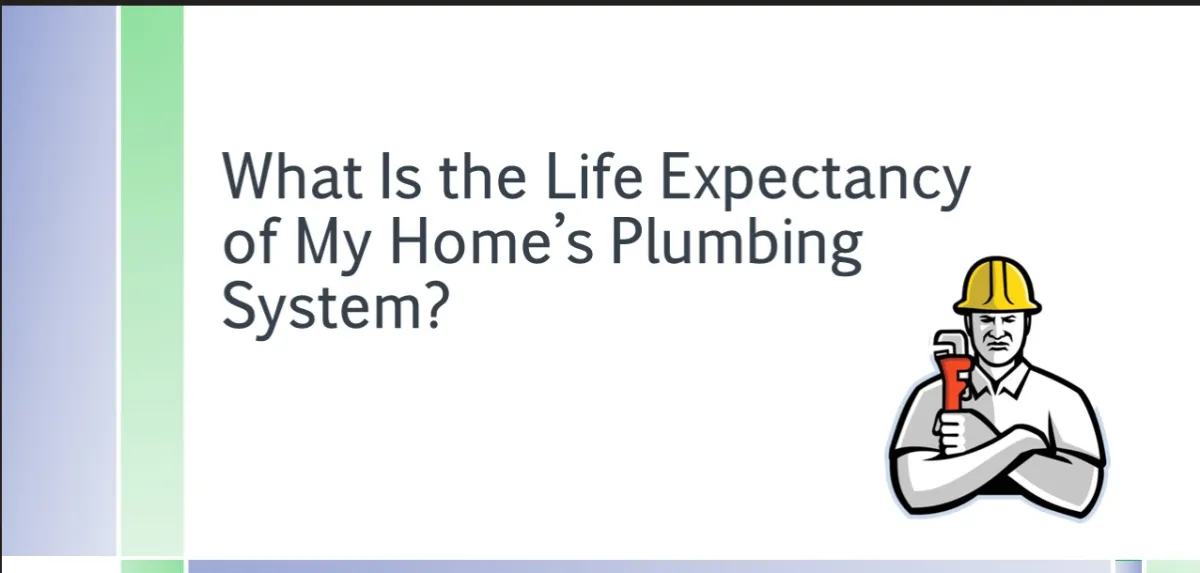
Understanding the Cost of Common Plumbing Repairs & The Lifespan of Plumbing Materials
1. Plumbing Problems: Inevitable and Often Expensive
Plumbing issues rarely show up when it’s convenient. Whether it's a slow drain, a dripping faucet, or a catastrophic pipe burst, these problems can disrupt daily life and hit your wallet hard. The costs add up quickly—not just for parts and labor, but for any damage caused along the way. What often surprises homeowners is how much of those costs are tied to the age and type of piping hidden behind their walls. A leaky toilet may only need a $10 part, but if the water’s been leaking behind drywall for months, expect repair bills in the thousands.
2. Not All Pipes Are Created Equal
The type of material your plumbing is made from plays a huge role in both durability and repair costs. Copper is long-lasting and corrosion-resistant, often pushing 70 years of life, but it’s one of the most expensive materials to replace. PEX, the flexible plastic piping gaining popularity in modern construction, is far cheaper and easier to install, with a life expectancy of around 40–50 years. PVC is common for drain lines and can last decades, though it becomes brittle over time. Homes built before the 1960s may still contain galvanized steel or cast iron pipes—materials that deteriorate from the inside out and often need full replacement.
3. How to Know It’s Time for a Replacement
The warning signs of failing plumbing aren’t always as dramatic as a flooded floor. Sometimes it’s subtle: brown or yellow-tinged water, reduced water pressure, or a strange smell wafting from a wall. Other times, it’s frequent minor leaks or slow drains in multiple areas. If your plumbing system is aging and starting to show multiple symptoms, it’s probably more cost-effective—and safer—to replace entire sections rather than continue patching them. Ignoring these early signs can lead to water damage, mold growth, and massive repair costs that go well beyond plumbing.
4. The True Cost of Plumbing Repairs
A single plumbing issue may not break the bank, but costs escalate quickly. A basic faucet repair might run $150, a new water heater could be $1,200, and a repipe of an entire home? Easily $8,000–$15,000 depending on the material and size of the house. Access also matters: pipes inside walls, beneath foundations, or above ceilings drive labor costs higher. Add to that the often-overlooked expenses like drywall repair, permits, inspections, or water damage restoration, and you start to see why proactive maintenance is cheaper than emergency fixes.
5. Proactive Maintenance Pays Off
When it comes to plumbing, waiting until something breaks is almost always the most expensive approach. That’s why proactive maintenance isn’t just smart—it’s financially strategic. Scheduling an annual inspection with a licensed plumber gives you a snapshot of your system’s health and can help you catch minor issues before they escalate. A hairline crack today could be a burst pipe tomorrow. A tiny drip could turn into mold damage inside your wall.
It’s not just about inspections, either. Small upgrades can have a big impact. Insulating exposed pipes—especially in attics, basements, or exterior walls—protects them from freezing in colder climates. Installing a water softener in areas with hard water prevents mineral buildup that can clog pipes and corrode water heaters. You can also invest in smart plumbing tech, like leak detection systems that send alerts to your phone, or automatic shut-off valves that cut the water if a major leak is detected. These aren’t gimmicks—they’re early warning systems that can save you thousands in repair bills and insurance claims. A little prevention now means fewer emergencies later.
6. Repair vs. Replace: Making the Right Call
This is the question every homeowner dreads: Do I fix it, or do I replace it entirely? The answer depends on several factors—cost, age, material, and how many times you’ve already fixed the same issue. If a pipe or system is nearing the end of its natural lifespan, and the repair cost approaches 50% or more of what a full replacement would cost, it’s usually more economical and less stressful to replace it altogether.
There’s also the matter of reliability. Constant repairs can leave you in a cycle of frustration and inconvenience—not to mention multiple service calls that add up over time. And let’s not forget about resale value. Buyers are becoming increasingly savvy about what’s behind the walls. Updated plumbing not only provides peace of mind but can also increase your home’s appeal and help it pass inspections with flying colors. Conversely, a home with old galvanized or patchwork plumbing might send buyers running or lower your home’s market value. When in doubt, it’s worth getting a second opinion from a trusted plumber and weighing both the short- and long-term costs.
7. Think of Plumbing as Your Home’s Circulatory System
We tend to think of plumbing as something passive—pipes just doing their job in the background. But the reality is, plumbing is your home’s circulatory system. It moves clean water where you need it, carries waste away safely, and keeps everything from your morning routine to your laundry day running smoothly. Like your body’s arteries and veins, if something clogs, leaks, or breaks down, the whole system suffers.
That’s why understanding what your plumbing is made of—and how it’s holding up—is crucial. You don’t need to be a master plumber to recognize the basics: What type of piping do you have? How old is it? Are there warning signs like discoloration, mold, water stains, or low pressure? With this knowledge, you’re not reacting to disasters—you’re preventing them. Plumbing might not be the most glamorous part of homeownership, but it’s one of the most essential. Treat it with care and attention, and it’ll quietly support your home life for decades. Ignore it, and you’ll eventually pay the price—not just in dollars, but in disruption and stress.
